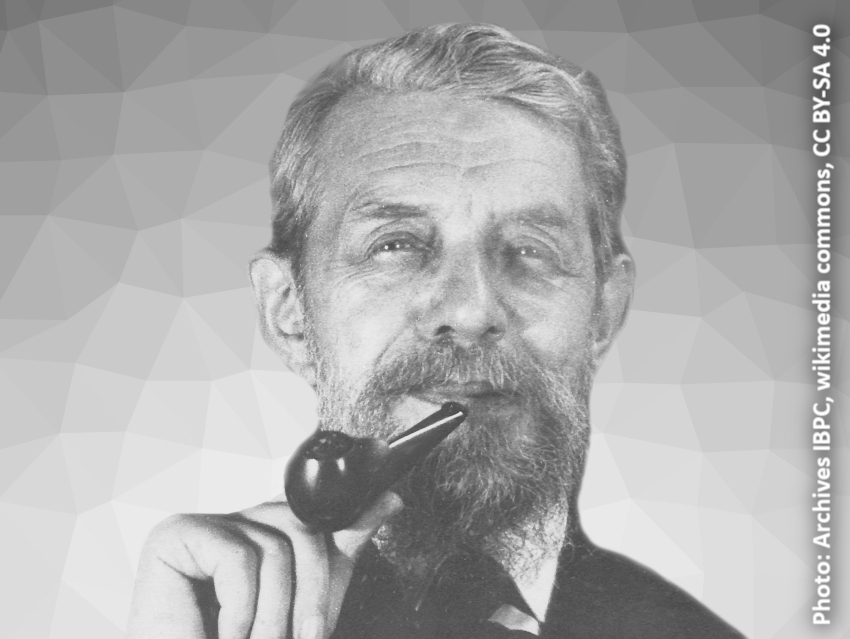Georges Urbain was born on April 12, 1872, in Paris, France. He studied chemistry at the École Supérieure de Physique et de Chimie Industrielles, Paris, and at the Sorbonne (University of Paris). He received his Ph.D. in 1899 for work on “Recherches sur la Séparation des Terres Rares” (“Research into the Separation of Rare Earth Elements”).
After his Ph.D., Urbain worked as head of the laboratories of the Compagnie Générale d’Electricité, Paris, until 1904 and then returned to the academy to work at the École de Physique et Chimie and teach a class on analytical chemistry at the Sorbonne, In 1907, Urbain joined the Commission Internationale des Poids Atomiques (International Commission on Atomic Weights), and in 1908, he became Professor of Mineral Chemistry at the Sorbonne. In 1928, Urbain was named Chair of General Chemistry at the Sorbonne, while simultaneously serving as Director of the Chemistry Service at the Institute of Biologie, Paris.
Among many other honors, Urbain received the Prize Nicolas Leblanc from the Société Chimique in 1906 and the Berthelot Medal in 1907. He was named Chevalier of the Légion d’Honneur (Knight of the French Order of Merit) in 1918 and promoted to Commandeur in 1933. He was a Member of the chemistry section of the Académie des Sciences, a Corresponding Member of the Sociedad Real de Ciencias de Madrid and the Académie Royale des Sciences of Bruxelles, and an Honorary Member of the Chemical Society of London, and also served as President of the Société Chimique de Paris, the Société de Chimie Physique, the Société de Minéralogie, and the Société Philomathique.
In addition to his research, Urbain also had a gift for the arts and was a painter, composer, and sculptor. Georges Urbain died on November 5, 1938.
Research
Urbain’s research focused on the rare-earth elements. He developed efficient methods for their separation, e.g., using fractional crystallization, and determined their spectra, magnetic properties, and atomic masses.
In 1907, Urbain discovered the element lutetium—named after Lutetia, the Latin word for Paris [1]. The new element was found as an impurity in ytterbia, or ytterbium(III) oxide, using a fractional crystallization process. The mineral had previously been thought to only contain ytterbium, which had been discovered by the Swiss chemist Jean Charles Galissard de Marignac in 1878.
Lutetium was independently discovered by Urbain, by the Austrian scientist Carl Auer von Welsbach [2], and by the British-American chemist Charles James [3]. Urbain originally named the element lutecium, and Welsbach proposed the name cassiopeium. A priority dispute between Urbain and von Welsbach followed [4], which ended when the International Commission on Atomic Weights granted priority to Urbain in 1909.
Georges Urbain is the answer to Guess the Chemist (124).
References
- [1] Un nouvel élément: le lutécium, résultant du dédoublement de l’ytterbium de Marignac,
G. Urbain,
Comptes Rendus 1907, 145, 759–762. - [2] Die Zerlegung des Ytterbiums in seine Elemente,
C. Auer v. Welsbach,
Monatsh. Chem. 1908, 29, 181–225.
https://doi.org/10.1007/BF01558944 - [3] A New Method for the Separation of the Yttrium Earths,
C. James,
J. Am. Chem. Soc. 1907, 29, 495–499.
https://doi.org/10.1021/ja01958a010 - [4] Lutetium und Neoytterbium oder Cassiopeium und Aldebaranium: Erwiderung auf den Artikel des Herrn Auer v. Welsbach (“Zur Zerlegung des Ytterbiums”,
G. Urbain,
Monatsh. Chem. 1910, 31, I–VI.
https://doi.org/10.1007/BF01530262
Sources
- Georges Urbain,
J. Wisniak,
Revista CENIC Ciencias Químicas 2015, 46, 77-85. - Georges Urbain (1872–1938),
Tenney L. Davis,
Proc. Am. Acad. Arts Sci. 1940, 74, 160. - Prof. Georges Urbain,
Nature 1938, 141, 1130.




